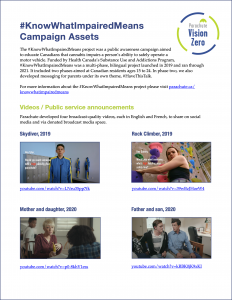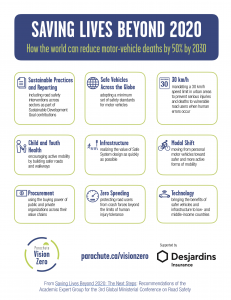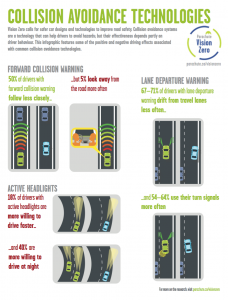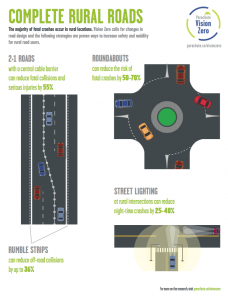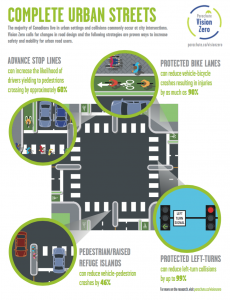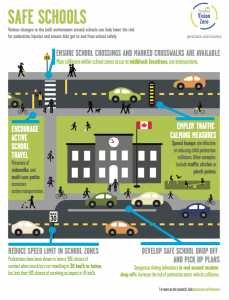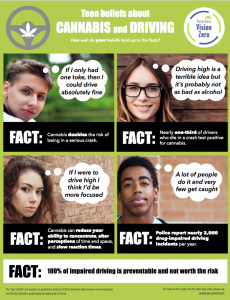For information on research referred to in these Parachute infographics, please see the References page.
Safe Mobility infographic series
Road safety measures have a broad impact on urban communities, with a wide range of benefits ranging from environmental to health. Parachute has created these infographics to explore the intersections among equity, health and wellbeing and the environment and their connections to road safety.
We encourage our road safety partners to use these infographics to start a dialogue with your colleges and politicians to change the way we think about road safety.
This Safe Mobility infographic series won Gold in the Print category of the 2024 International Safety Media Awards.
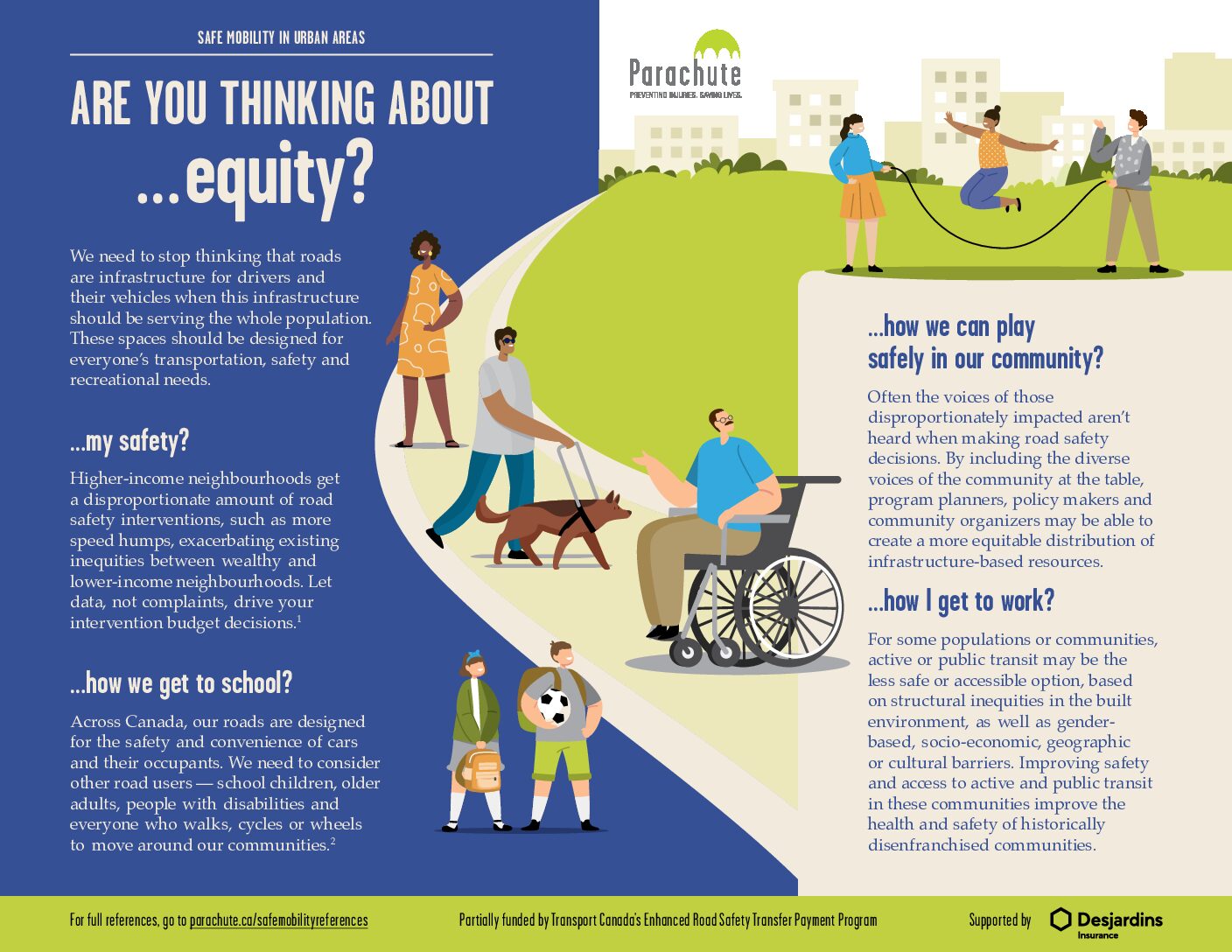
Safe mobility in urban areas – Equity
Are you thinking about…equity?
We need to stop thinking that roads are infrastructure for drivers and their vehicles when this infrastructure should be serving the whole population. These spaces should be designed for everyone’s transportation, safety and recreational needs.
…my safety?
Higher-income neighbourhoods get a disproportionate amount of road safety interventions, such as more speed humps, exacerbating existing inequities between wealthy and lower-income neighbourhoods. Let data, not complaints, drive your intervention budget decisions.
…how we get to school?
Across Canada, our roads are designed for the safety and convenience of cars and their occupants. We need to consider other road users — school children, older adults, people with disabilities and everyone who walks, cycles or wheels to move around our communities.
…how we can play safely in our community?
Often the voices of those disproportionately impacted aren’t heard when making road safety decisions. By including the diverse voices of the community at the table, program planners, policy makers and community organizers may be able to create a more equitable distribution of infrastructure-based resources.
…how I get to work?
For some populations or communities, active or public transit may be the less safe or accessible option, based on structural inequities in the built environment, as well as gender- based, socio-economic, geographic or cultural barriers. Improving safety and access to active and public transit in these communities improve the health and safety of historically disenfranchised communities.
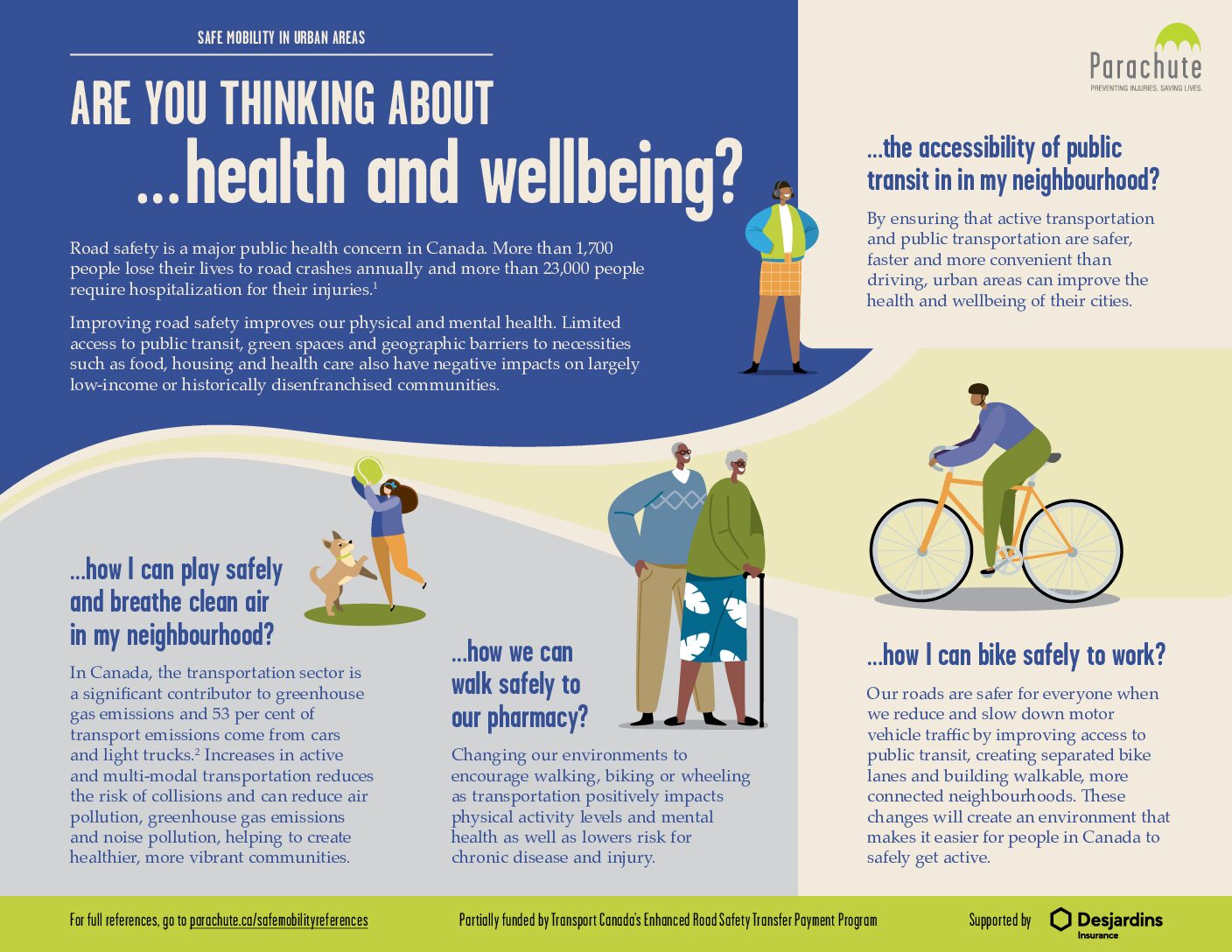
Safe mobility in urban areas – Health and wellbeing
Are you thinking about…health and wellbeing?
Road safety is a major public health concern in Canada. More than 1,700 people lose their lives to road crashes annually and more than 23,000 people require hospitalization for their injuries.
Improving road safety improves our physical and mental health. Limited access to public transit, green spaces and geographic barriers to necessities such as food, housing and health care also have negative impacts on largely low-income or historically disenfranchised communities.
…how I can play safely and breathe clean air in my neighbourhood?
In Canada, the transportation sector is a significant contributor to greenhouse gas emissions and 53 per cent of transport emissions come from cars and light trucks.2 Increases in active and multi-modal transportation reduces the risk of collisions and can reduce air pollution, greenhouse gas emissions and noise pollution, helping to create healthier, more vibrant communities.
…how we can walk safely to our pharmacy?
Changing our environments to encourage walking, biking or wheeling as transportation positively impacts physical activity levels and mental health as well as lowers risk for chronic disease and injury.
…the accessibility of public transit in in my neighbourhood?
By ensuring that active transportation and public transportation are safer, faster and more convenient than driving, urban areas can improve the health and wellbeing of their cities.
…how I can bike safely to work?
Our roads are safer for everyone when we reduce and slow down motor vehicle traffic by improving access to public transit, creating separated bike lanes and building walkable, more connected neighbourhoods. These changes will create an environment that makes it easier for people in Canada to safely get active.
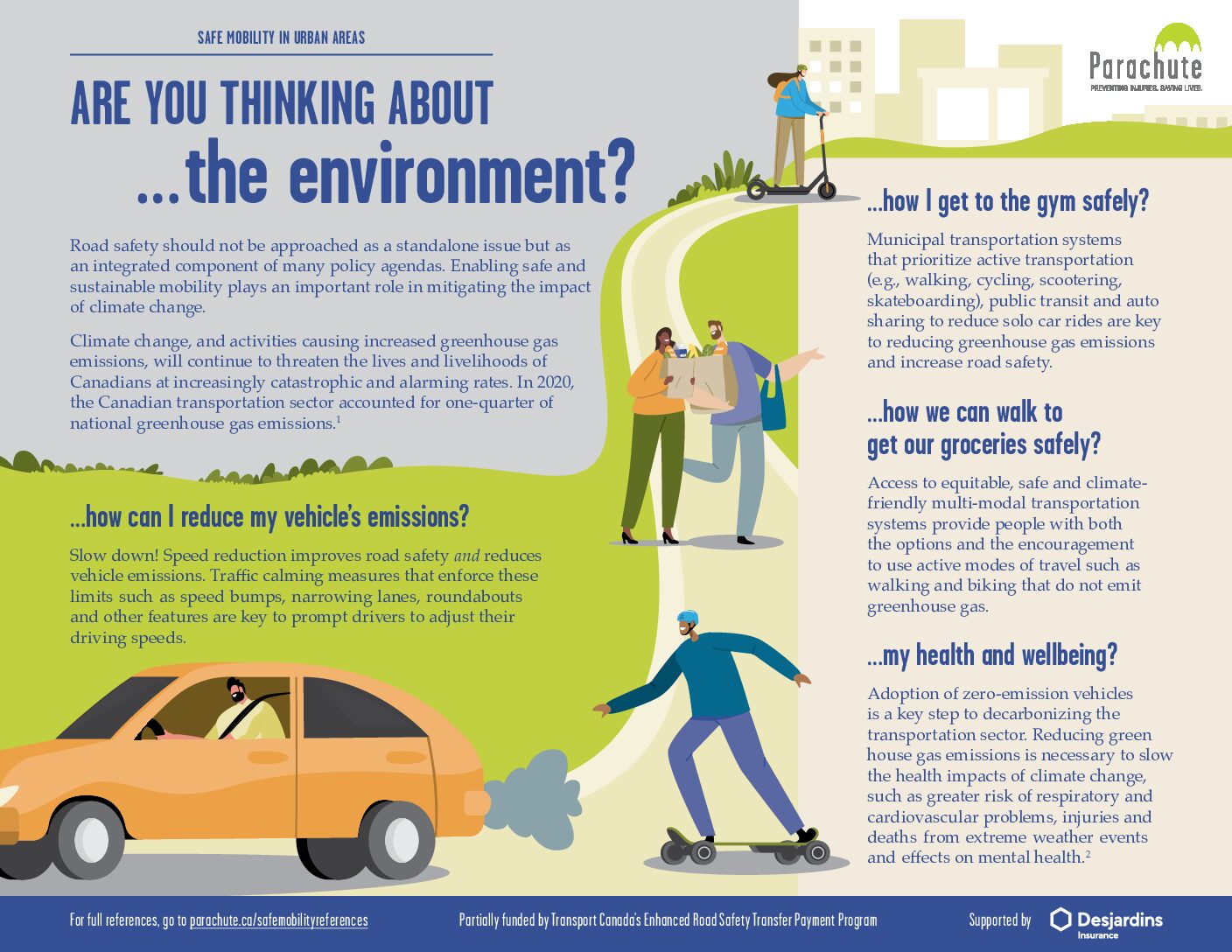
Safe mobility in urban areas – Environment
Are you thinking about…the environment?
Road safety should not be approached as a standalone issue but as an integrated component of many policy agendas. Enabling safe and sustainable mobility plays an important role in mitigating the impact of climate change.
Climate change, and activities causing increased greenhouse gas emissions, will continue to threaten the lives and livelihoods of Canadians at increasingly catastrophic and alarming rates. In 2020, the Canadian transportation sector accounted for one-quarter of national greenhouse gas emissions.
…how can I reduce my vehicle’s emissions?
Slow down! Speed reduction improves road safety and reduces vehicle emissions. Traffic calming measures that enforce these limits such as speed bumps, narrowing lanes, roundabouts and other features are key to prompt drivers to adjust their driving speeds.
…how I get to the gym safely?
Municipal transportation systems that prioritize active transportation (e.g., walking, cycling, scootering, skateboarding), public transit and auto sharing to reduce solo car rides are key to reducing greenhouse gas emissions and increase road safety.
…how we can walk to get our groceries safely?
Access to equitable, safe and climate- friendly multi-modal transportation systems provide people with both the options and the encouragement to use active modes of travel such as walking and biking that do not emit greenhouse gas.
…my health and wellbeing?
Adoption of zero-emission vehicles is a key step to decarbonizing the transportation sector. Reducing green house gas emissions is necessary to slow the health impacts of climate change, such as greater risk of respiratory and cardiovascular problems, injuries and deaths from extreme weather events and effects on mental health.
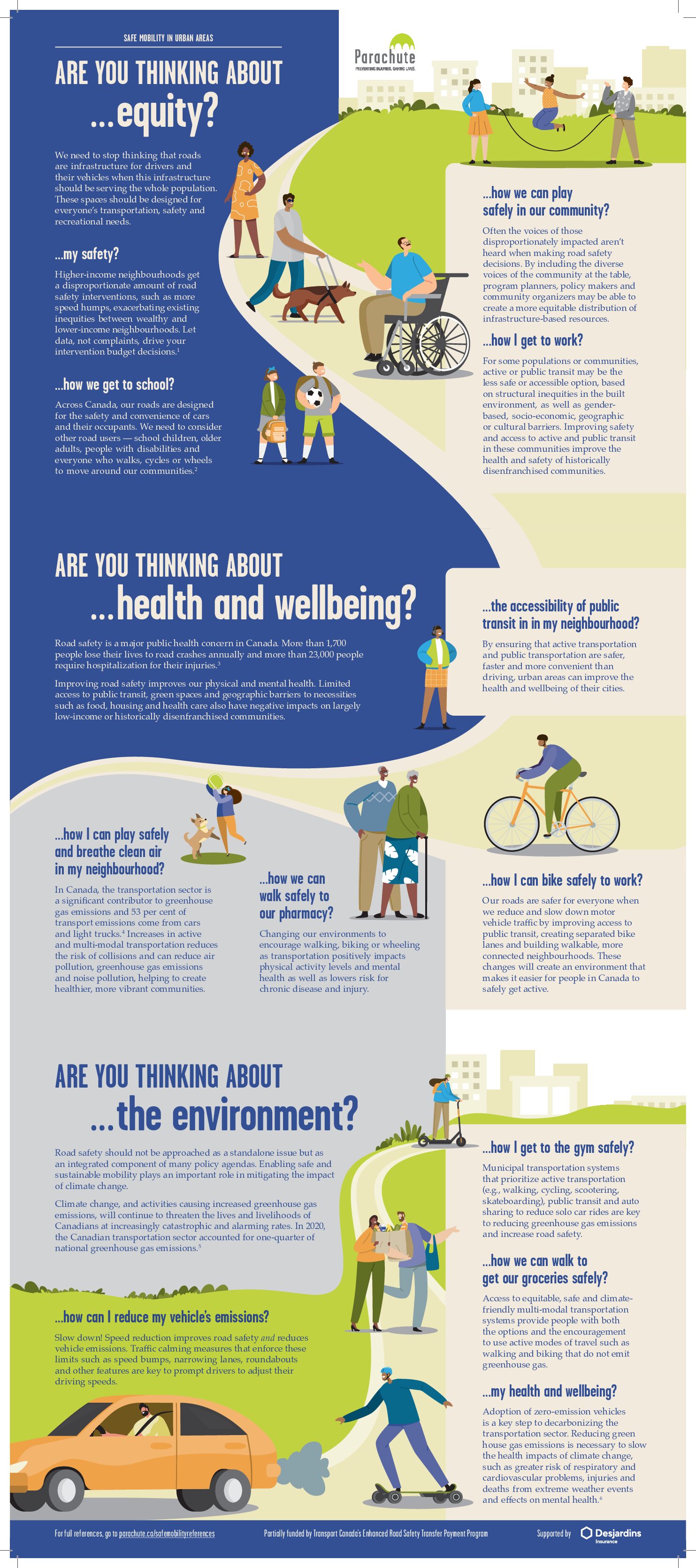
Safe mobility in urban areas – combined printable version
Download a printable 28 cm x 43 cm (11” x 17”) PDF in poster format that combines the information from the Equity, Environment, and Health and Wellness infographics.
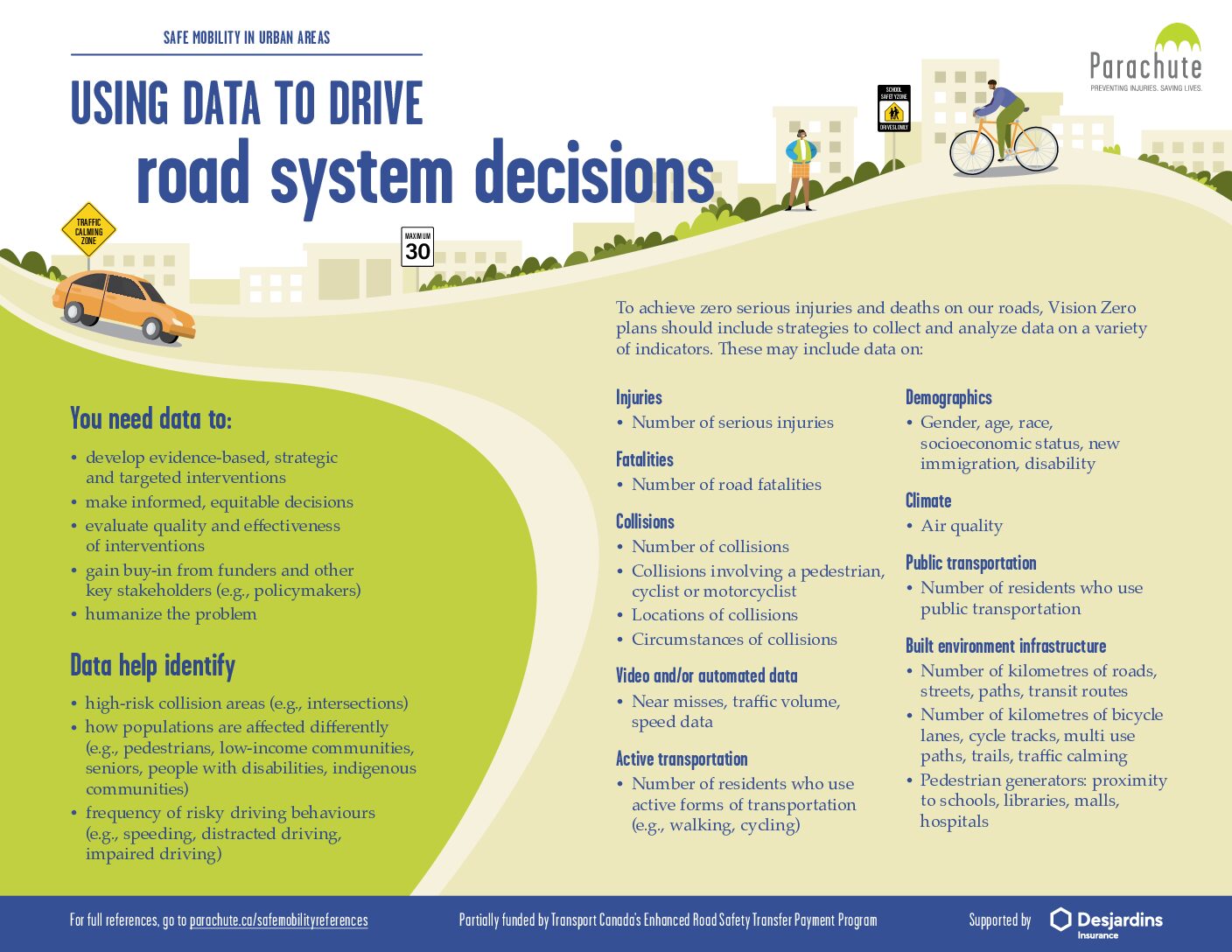
Safe mobility in urban areas – Using data to drive road system decisions
Using data to drive road system decisions
You need data to:
- develop evidence-based, strategic and targeted interventions
- make informed, equitable decisions
- evaluate quality and effectivenessof interventions
- gain buy-in from funders and other key stakeholders (e.g., policymakers)
- humanize the problem
Data help identify
- high-risk collision areas (e.g., intersections)
- how populations are affected differently (e.g., pedestrians, low-income communities, seniors, people with disabilities, indigenous communities)
- frequency of risky driving behaviours (e.g., speeding, distracted driving, impaired driving)
To achieve zero serious injuries and deaths on our roads, Vision Zero plans should include strategies to collect and analyze data on a variety of indicators. These may include data on:
Injuries
• Number of serious injuries
Fatalities
• Number of road fatalities
Collisions
- Number of collisions
- Collisions involving a pedestrian, cyclist or motorcyclist
- Locations of collisions
- Circumstances of collisions
Video and/or automated data
- Near misses, traffic volume, speed data
Active transportation
- Number of residents who use active forms of transportation (e.g., walking, cycling)
Demographics
- Gender, age, race, socioeconomic status, new immigration, disability
Climate
- Air quality
Public transportation
- Number of residents who use public transportation
Built environment infrastructure
- Number of kilometres of roads, streets, paths, transit routes
- Number of kilometres of bicycle lanes, cycle tracks, multi use paths, trails, traffic calming
- Pedestrian generators: proximity to schools, libraries, malls, hospitals
Linking data tells a more complete story. Data sharing opportunities:
Law enforcement (e.g., collision reporting, traffic offences)
Local government departments (e.g., data from Parks and Recreation, Maintenance, Public Transit, Urban
Insurance companies (e.g., claims)
Public health (e.g., demographics, physical activity, injuries, deaths, equity indicators)
Hospitals (e.g., emergency visits, hospital admissions, trauma cases)
Data gaps and solutions
As road safety advocates we need to co-ordinate our efforts to address the gaps in our data and continue to look for new and innovative ways to collect and use road safety data.
| Gaps | Solutions |
|---|---|
| The data currently being collected lack specificity, detail and frequency that could inform decision making. | To obtain quality, individualized data at the local level, municipalities need to invest in new technologies to collect and analyze collision data in real time. Exposure data (e.g., time spent cycling, kilometers driven) is needed to put data in context. |
| Existing openly accessible data sources do not provide sufficiently detailed information on location and who is involved in collisions, and underreport certain types of collisions. | Reporting should be enhanced to capture demographic data and capture pedestrian and cyclist incidents that do not involve motor vehicles (e.g., a person thrown from their bike after hitting a pothole). |
| Data collected by individual organizations and government are often kept separate, not shared widely and are not harmonized. | A centralized and well-maintained database of road-safety-related information is needed to make use of the available information more efficiently and effectively. |
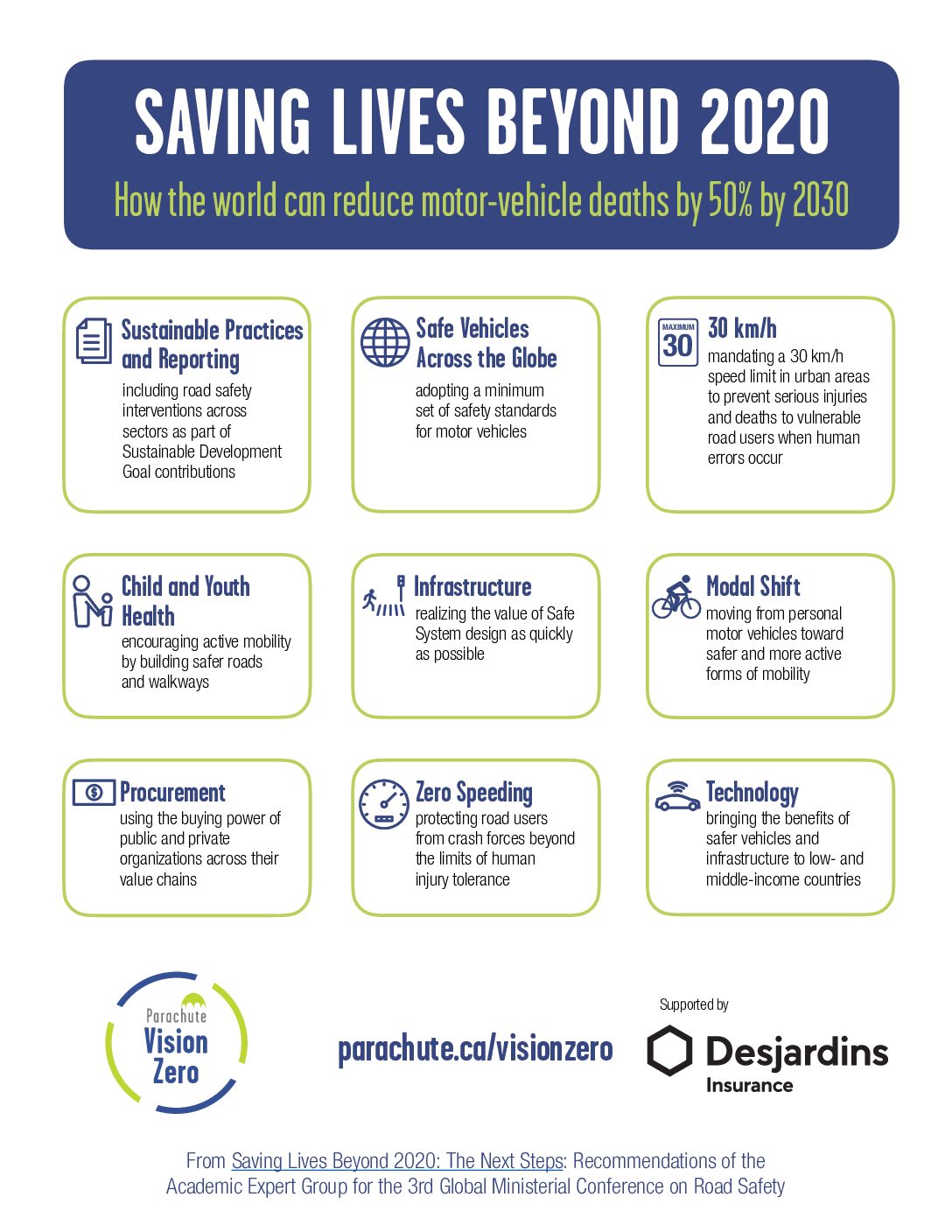
Saving lives beyond 2020: How the world can reduce motor-vehicle deaths by 50% by 2030
Saving lives beyond 2020
How the world can reduce motor-vehicle deaths by 50% by 2030
Sustainable Practices and Reporting
including road safety interventions across sectors as part of Sustainable Development Goal contributions
Safe Vehicles Across the Globe
adopting a minimum set of safety standards for motor vehicles
30 km/h
mandating a 30 km/h speed limit in urban areas to prevent serious injuries and deaths to vulnerable road users when human errors occur
Child and Youth Health
encouraging active mobility by building safer roads and walkways
Infrastructure
realizing the value of Safe System design as quickly as possible
Modal Shift
moving from personal motor vehicles toward safer and more active forms of mobility
Procurement
using the buying power of public and private organizations across their value chains
Zero Speeding
protecting road users from crash forces beyond the limits of human injury tolerance
Technology
bringing the benefits of safer vehicles and infrastructure to low- and middle-income countries
From Saving Lives Beyond 2020: The Next Steps: Recommendations of the Academic Expert Group for the 3rd Global Ministerial Conference on Road Safety
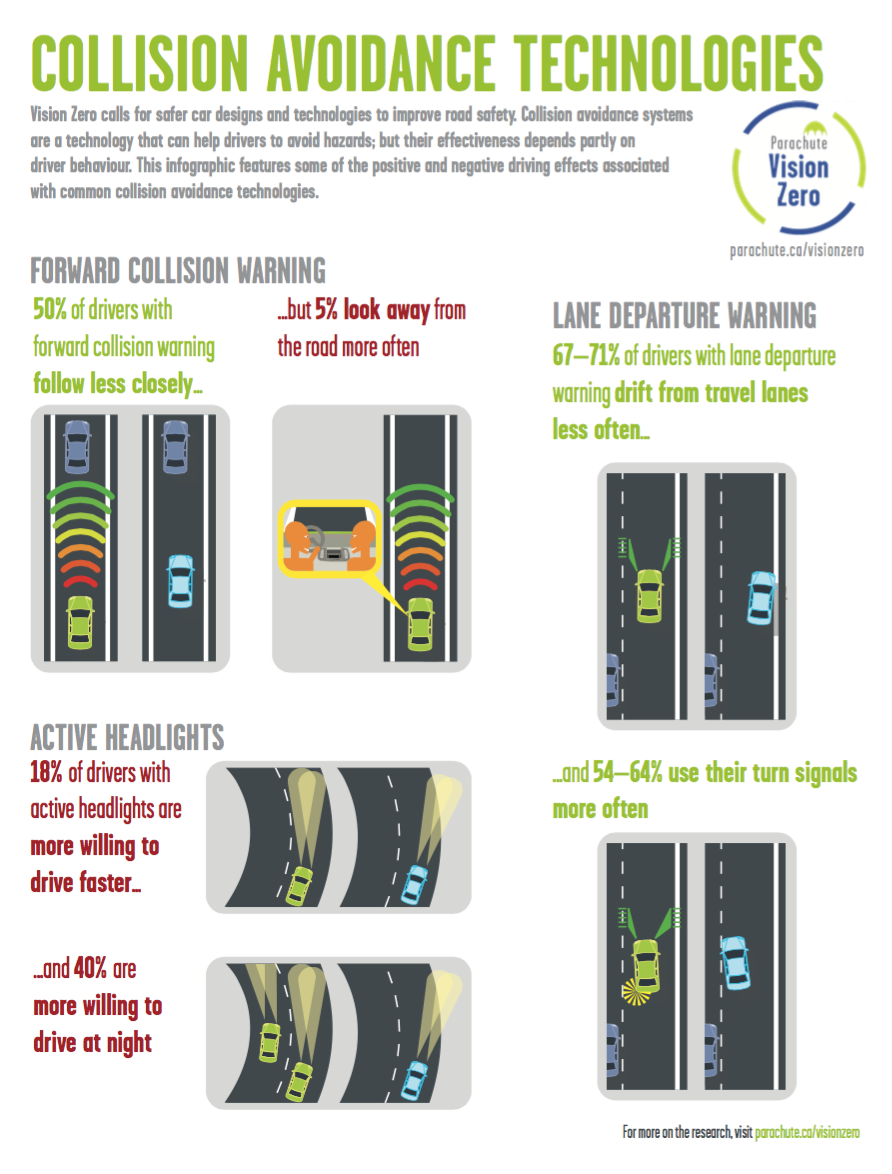
Collision avoidance technologies
Collision avoidance technologies
Positive and negative driving effects associated with common collision avoidance technologies.
Vision Zero calls for safer car designs and technologies to improve road safety. Collision avoidance systems are a technology that can help drivers to avoid hazards; but their effectiveness depends partly on driver behaviour.
Forward collision warning
Positive effect:
50 per cent of drivers with forward collision warning follow less closely.
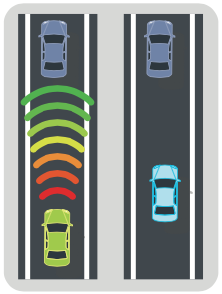
Negative effect:
5 per cent look away from the road more often.
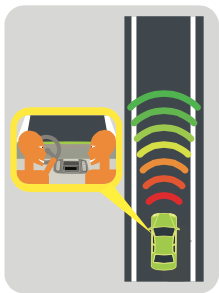
Lane departure warning
Positive effect:
67-71 per cent of drivers with lane departure warning drift from travel lanes less often.
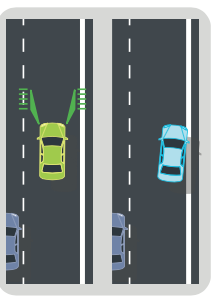
Positive effect:
54-64 per cent of drivers with lane departure warning use their turn signals more often.
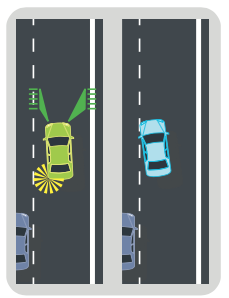
Active headlights
Negative effects:
- 18 per cent of drivers with active headlights are more willing to drive faster.
- 40 per cent are more willing to drive at night.
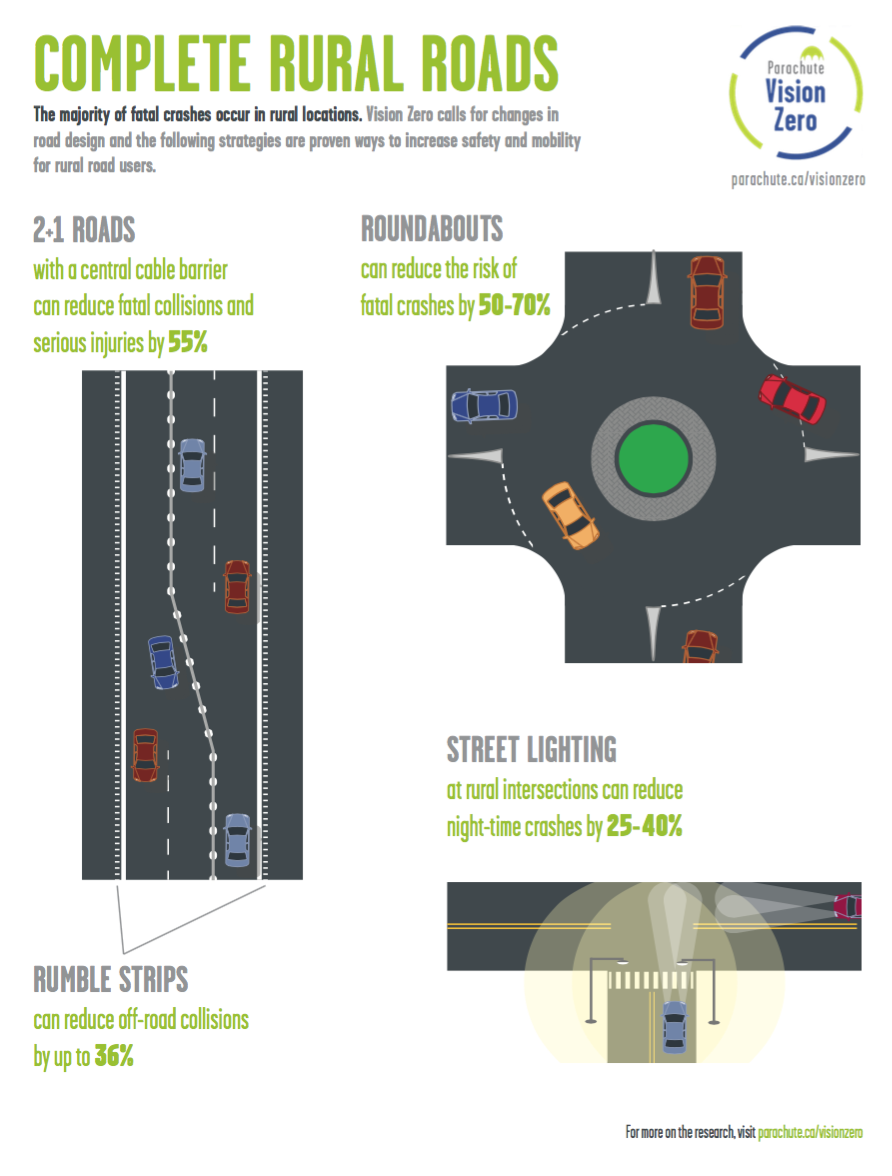
Complete rural roads
Complete rural roads
The majority of fatal crashes occur in rural locations.
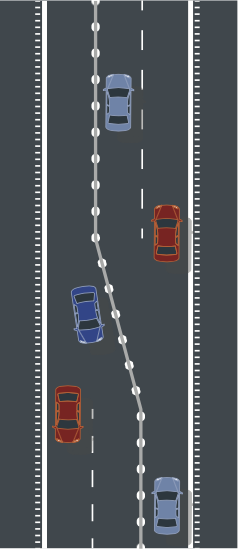
Road design strategies proven to increase safety and mobility for rural road users.
- 2+1 roads with a central cable barrier can reduce fatal collisions sand serious injuries by 55 per cent
- Roundabouts can reduce the risk of fatal crashes by 50-70 per cent.
- Rumble strips can reduce off-road collisions by up to 36 per cent.
- Street lighting at rural intersections can reduce night-time crashes by 25-40 per cent.
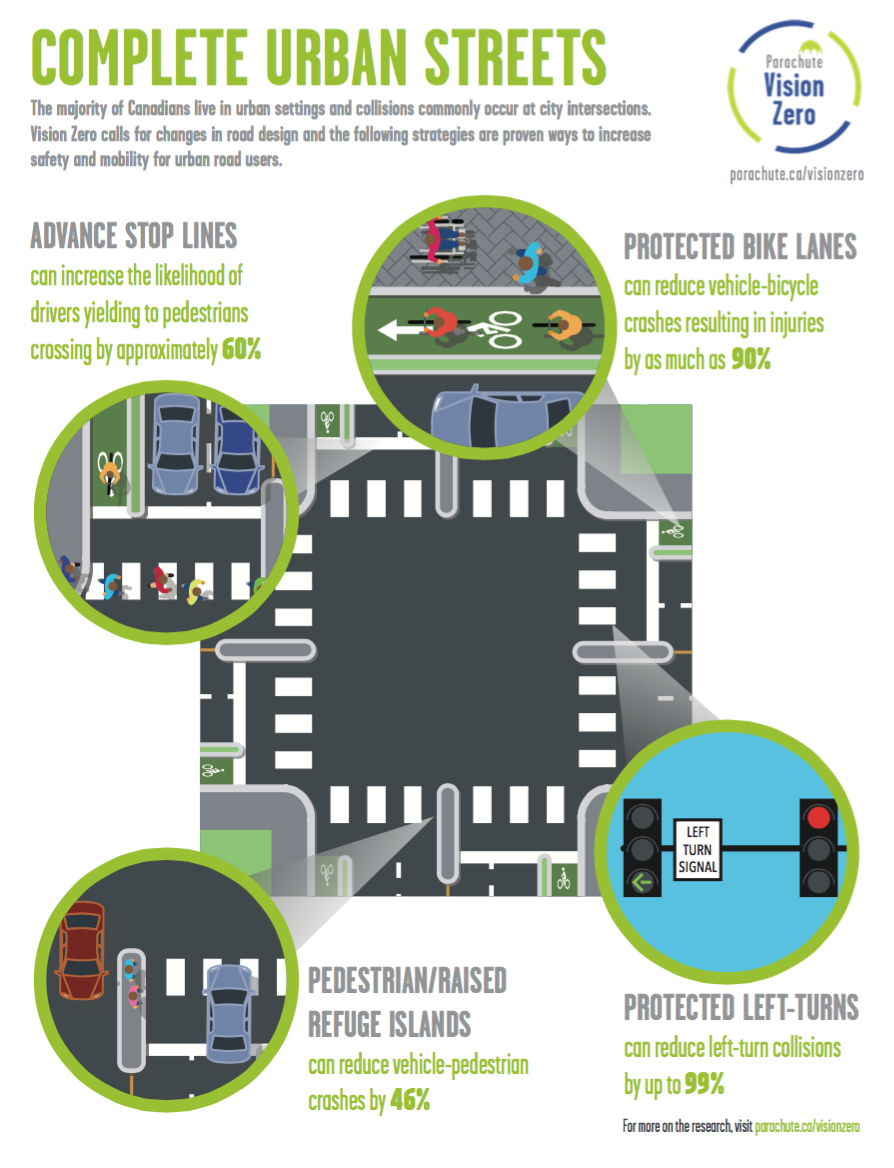
Complete urban streets
Complete urban streets
The majority of Canadians live in urban settings and collisions commonly occur at city intersections.
Road design strategies proven to increase safety and mobility for urban intersections.
- Advance stop lines can increase the likelihood of drivers yielding to pedestrians crossings by approximately 60 per cent.
- Protected bike lanes can reduce vehicle-bicycle crashes resulting in injuries by as much as 90 per cent.
- Pedestrian/raised refuge islands can reduce vehicle-pedestrian crashes by 46 per cent.
- Protected left-turns can reduce left-turn collisions by up to 99 per cent.
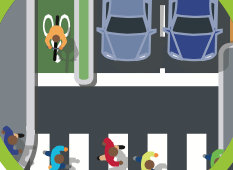
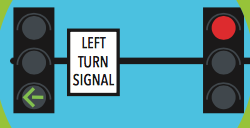
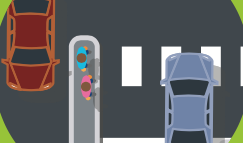
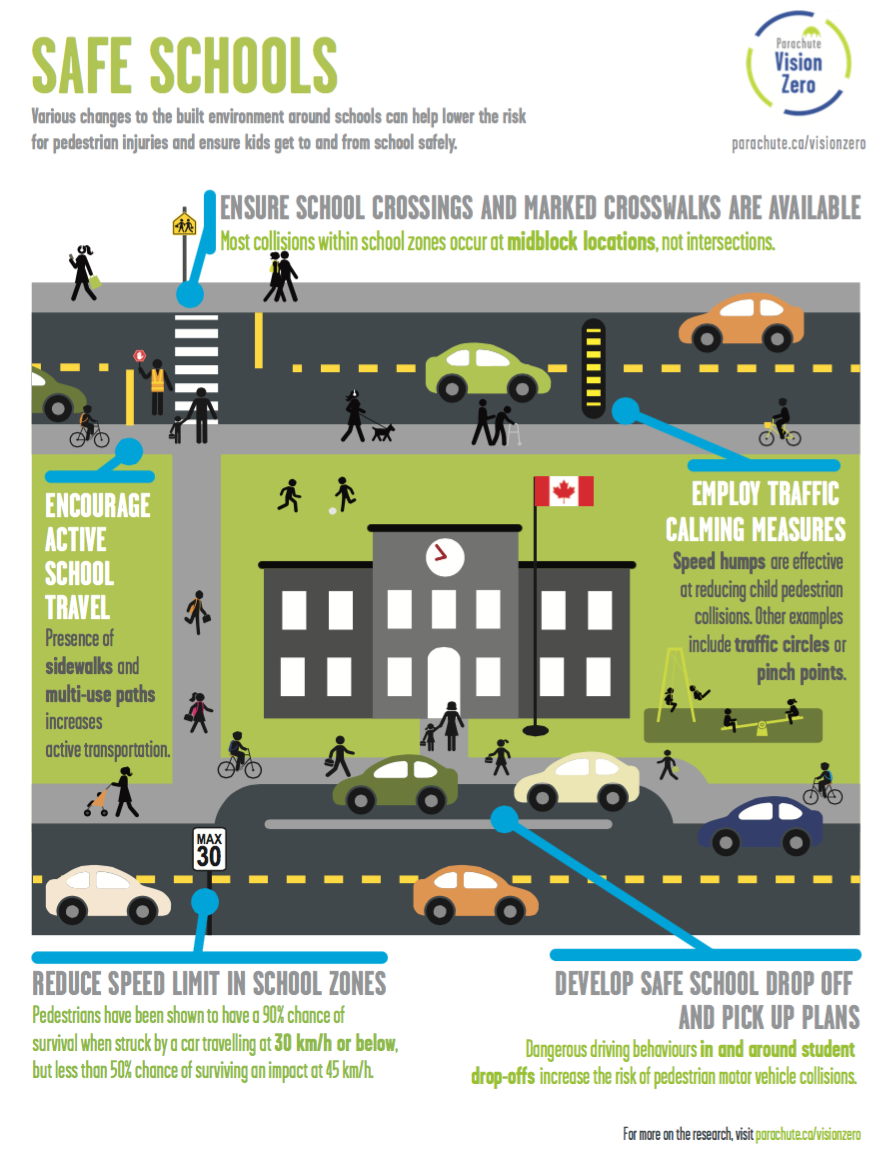
Safe schools
Safe schools
Various changes to the built environment around schools can help lower the risk for pedestrian injuries and ensure kids get to and from school safely.
- Ensure school crossings and marked crosswalks are available. Most collisions within school zones occur at mid block locations, not intersections.
- Encourage active school travel. Presence of sidewalks and multi-use paths increases active transportation.
- Employ traffic calming measures. Speed humps are effective at reducing child pedestrian collisions. Other examples include traffic circles or pinch points.
- Develop safe school drop off and pick up plans. Dangerous driving behaviours in and around student drop-offs increase the risk of pedestrian motor vehicle collisions.
- Reduce speed limit in school zones. Pedestrians have a 90 per cent chance of survival when struck by a car travelling at 30 km/h or below, but less than 50 per cent chance of surviving an impact at 45 km/h.
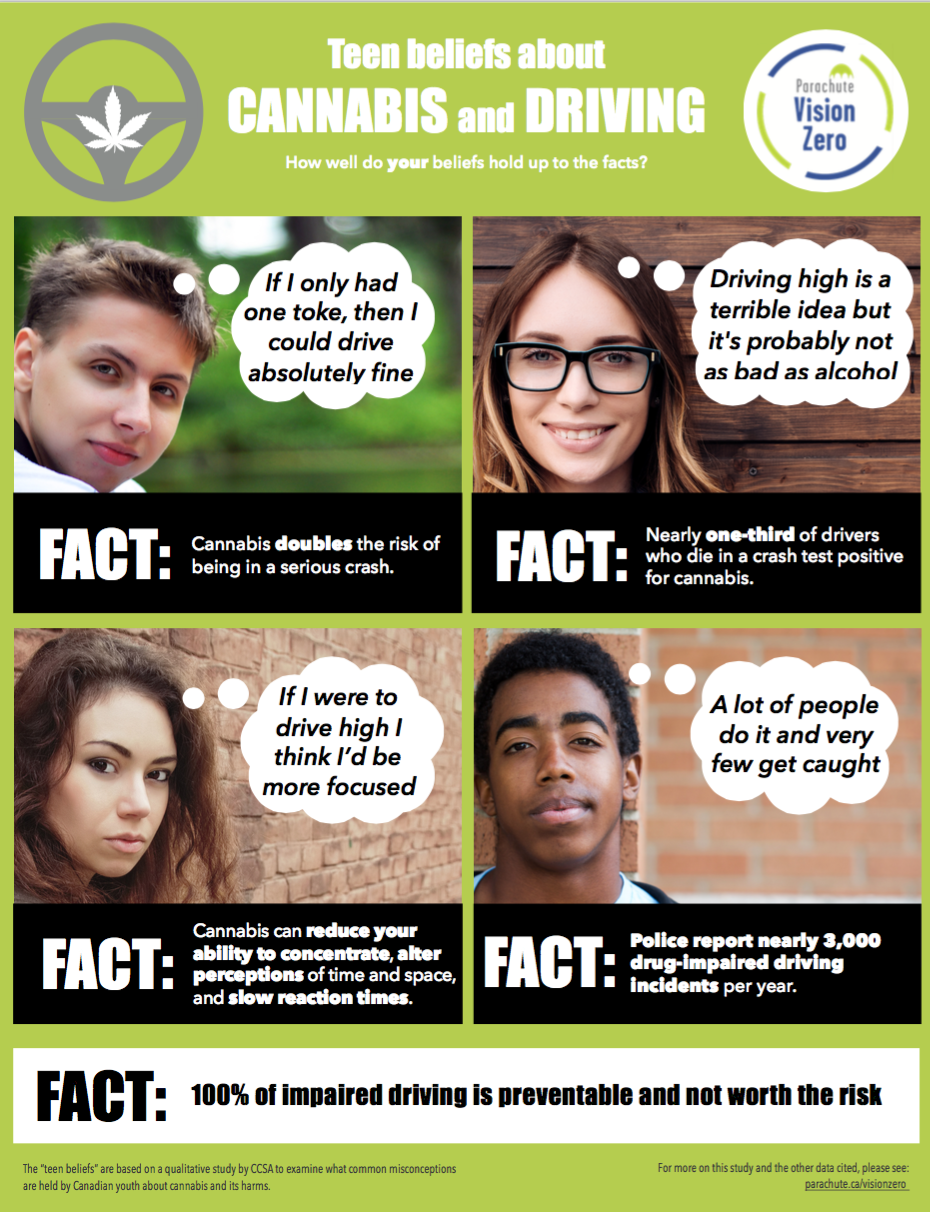
Teen beliefs about cannabis and driving
Teen beliefs about cannabis and driving
Common misconceptions Canadian youth have about cannabis and its harm according to the Canadian Centre on Substance Use and Addiction (CCSA).
Belief: “If I only had one toke, then I could drive absolutely fine.”
Fact: Cannabis doubles the risk of being in a serious crash.
Belief: “Driving high is a terrible idea but it’s probably not as bad as alcohol.”
Fact: Nearly one-third of drivers who die in a crash test positive for cannabis.
Belief: “If I were to drive high, I think I’d be more focused.”
Fact: Cannabis can reduce your ability to concentrate, alter perceptions of time and space and slow reaction times.
Belief: “A lot of people do it and very few get caught.”
Fact: Police report nearly 3,000 drug-impaired driving incidents per year.
Fact: 100 per cent of impaired driving is preventable and not worth the risk.
